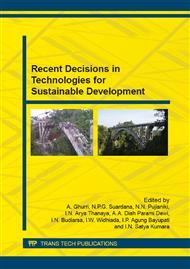p.127
p.133
p.139
p.145
p.151
p.157
p.163
p.169
p.179
Numerical Simulation of Breaking Waves in a Wave Group by SPH
Abstract:
Smoothed Particle Hydrodynamic (SPH) numerical model is used to investigate wave group effects at breaking and after breaking by comparing individual waves in a group with equivalent regular waves. Regular wave break almost at the same position and with the same wave height. Meanwhile in a wave group, the wave breaks in the variant positions and with variant wave heights. These phenomena cause the breaking point to be more scattered in a wave group rather than in regular waves. Return flow due to the breaking of wave groups appears more significant and is extended to the full depth in the surf zone rather than in regular waves. Swash oscillations of the wave group in the surf zone appear irregular. Meanwhile in regular waves, swash oscillations are almost constant.
Info:
Periodical:
Pages:
151-156
Citation:
Online since:
July 2015
Authors:
Keywords:
Price:
Сopyright:
© 2015 Trans Tech Publications Ltd. All Rights Reserved
Share:
Citation:


